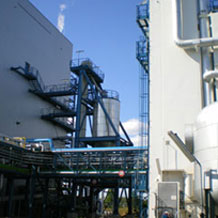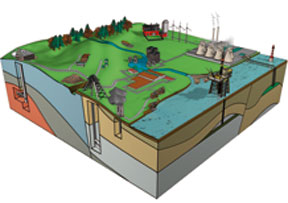What is carbon capture and storage (CCS)?
CCS involves capturing carbon dioxide (CO2) from large emission sources and then transporting and storing or burying it in a suitable deep geological formation. CCS can also mean the removal or scrubbing of CO2 from the open atmosphere followed by storage in a deep geological formation.
Biological techniques where plant organic material, which contains CO2, is captured so that it is isolated from the atmosphere could also be called CCS. However, it is more conventional to use the term 'carbon capture and storage' to describe non-biological processes.
Globally, emissions of CO2 from fossil-fuel use in the year 2000 totalled about 23.5 Gt with 60% attributed to large (>0.1 Mt CO2 yr -1) stationary emission sources such as power stations, cement production and refineries. Clusters of these sources are found in North America, Europe, East Asia and South Asia. Various ways to try to reduce overall CO2 emissions are now being investigated but the main way to reduce CO2 emissions from these large sources is called carbon capture and storage.
CCS demonstration sites

CCS applied to a modern conventional electricity power plant could reduce CO2 emissions to the atmosphere by approximately 80–90 per cent compared to a plant without CCS. The IPCC also estimates that CCS could provide between 10 and 55 per cent of the total worldwide carbon mitigation effort until year 2100.
As a result, considerable effort is going into the development of CCS and several demonstration sites have shown that the technology is feasible. As a result, the first pilot-scale CCS power plant began operating in September 2008 in the eastern German power plant Schwarze Pumpe.








